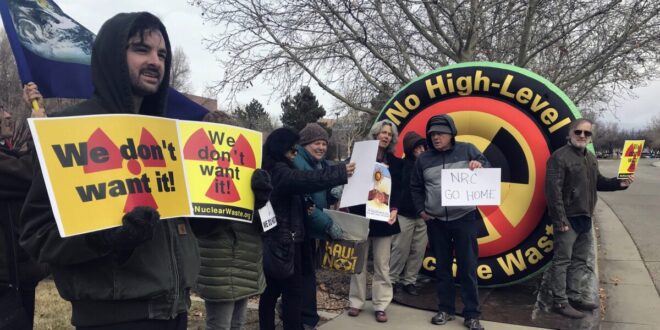The Misconception of Nuclear Waste
Nuclear waste
has long been a top concern for Americans who, thanks primarily to
The Simpsons
,
think the waste is a bright green liquid that is impossible to contain. In an enticing turn of events last month, nuclear advocate Madison Hilly made
headlines
by posing near nuclear waste
while pregnant — demonstrating it is “safe enough to hug.”
A Political Problem, Not a Scientific Problem
Madison’s activism highlights the troubling fact that America’s deep-seated fear of nuclear waste is not a scientific problem but rather a political one.
The Reality of Nuclear Waste
The reality is that once nuclear waste is safely stored inside concrete casks, it poses no threat to the American public. Contrary to popular belief, it is not some scary bright green oozing substance but merely a solid metal that sits
safely
contained inside a large concrete container built to withstand natural disasters.
Yes, nuclear waste is technically radioactive, but so are many
other things
we interact with daily, such as X-rays, smoke detectors, and, yes,
bananas.
In fact, nuclear waste is not the leading source of radiation in our world. Other natural sources, such as radon released from rocks, soil, and water, are. The background radiation in
Colorado,
where I live, is higher than near any nuclear plant in the United States.
Nuclear Waste vs Solar Industry Waste
The bottom line is that nuclear waste should not be causing us crippling anxiety and ultimately stopping us from achieving a clean energy future.
Just for kicks, let’s look at the solar industry, which is projected to produce
78 million tons
of waste by 2050 — an underestimation, according to Harvard Business Review. As of right now, only
one
U.S. solar company, First Solar, has a system in place to deal with retired solar panels. This waste is not harmless, as solar panels contain trace amounts of heavy metals, making them a potentially
hazardous material.
The fact of the matter is that the solar industry is not responsible and has not prepared for the coming deluge of solar waste that could wreak havoc on our health and environment.
Recycling Nuclear Waste for a Cleaner Future
What’s more, the United States could put its nuclear waste to good use by recycling it to create more nuclear fuel. Spent nuclear fuel harbors more than
90%
of its original potential energy, creating the opportunity to reuse the fuel to generate more energy and reduce the volume of waste. This also lessens the amount of crude uranium needed to produce nuclear energy.
France, in particular,
excels
at recycling spent nuclear fuel. Its La Hague recycling plant has salvaged more than 23,000 tons of spent fuel since it began operating in the 1960s. That is enough fuel to power France’s nuclear fleet for 14 years. If we replicated a similar recycling method here in America, we could decrease the amount of nuclear waste we need to store annually.
The Challenge of Nuclear Waste Storage
Despite the undeniable evidence that nuclear waste is not a threat to Americans, fears still exist around the management of the industry’s waste.
Some 40 years ago, the federal government underwent a process to permanently store all of the country’s nuclear waste deep underground in
Yucca Mountain
— a long-term
solution
that would isolate the waste for hundreds of thousands of years. However, due to local concerns, the government’s plans for permanently storing our nation’s nuclear waste were unsuccessful.
The conversation about where to permanently store our nuclear waste continues today. It seems the negative optics of storing so-called “hazardous” nuclear waste have overpowered our desire for a clean energy transition.
Embracing Nuclear Energy for a Clean Energy Future
If our collective hope is a clean energy future, we must act like it. Unfounded fears about nuclear waste, based on politics rather than science, limit our ability to expand nuclear energy, which can replace carbon-emitting energy sources and power the clean energy transition. We need more advocates such as Madison, who are willing to demonstrate that nuclear waste is not an existential threat, but the natural byproduct of our greatest ally in combating climate change.
Sarah Jensen is a policy associate with the American Conservation Coalition. She’s based in Boulder, Colorado.
 Mind Uncharted Explore. Discover. Learn.
Mind Uncharted Explore. Discover. Learn.




